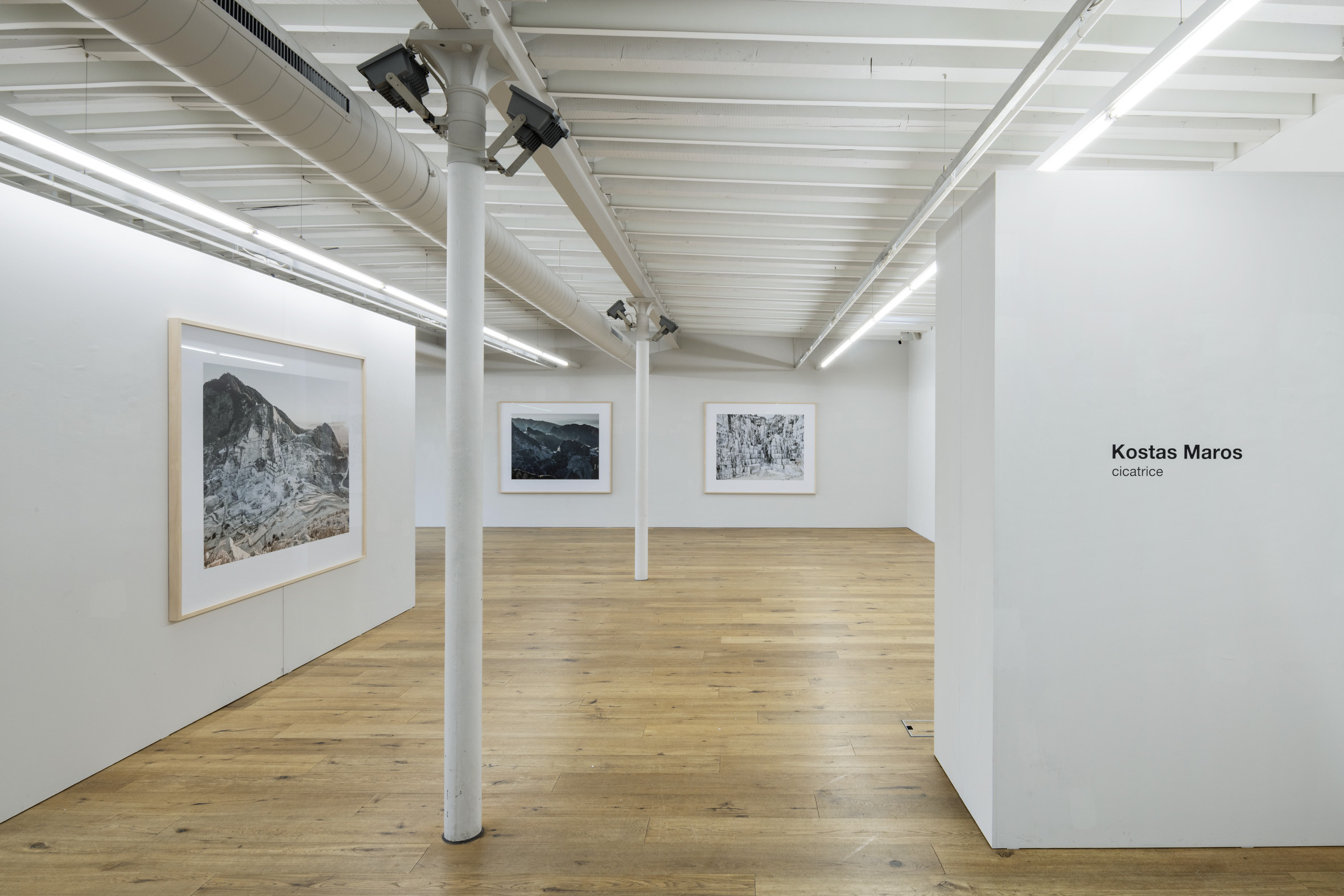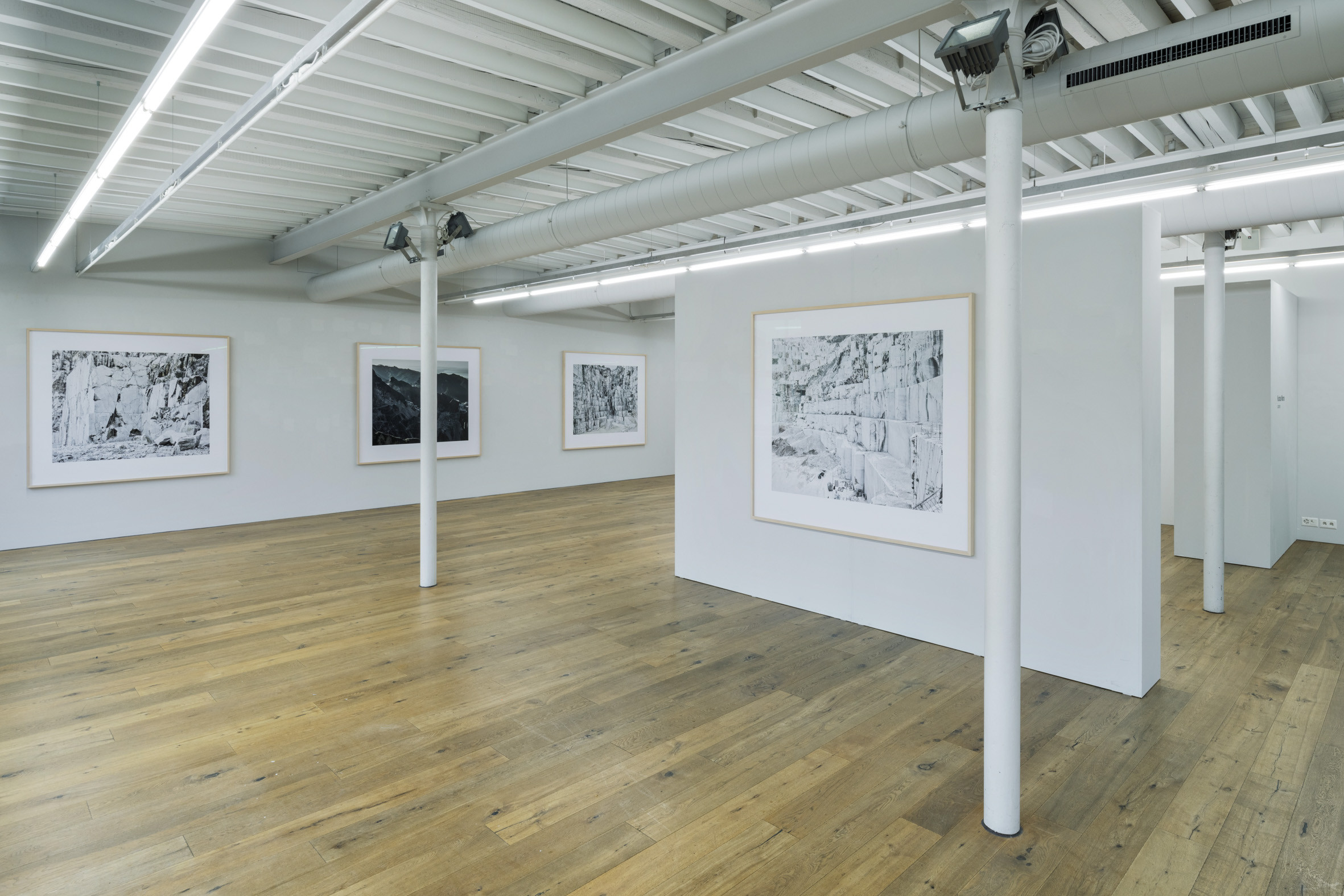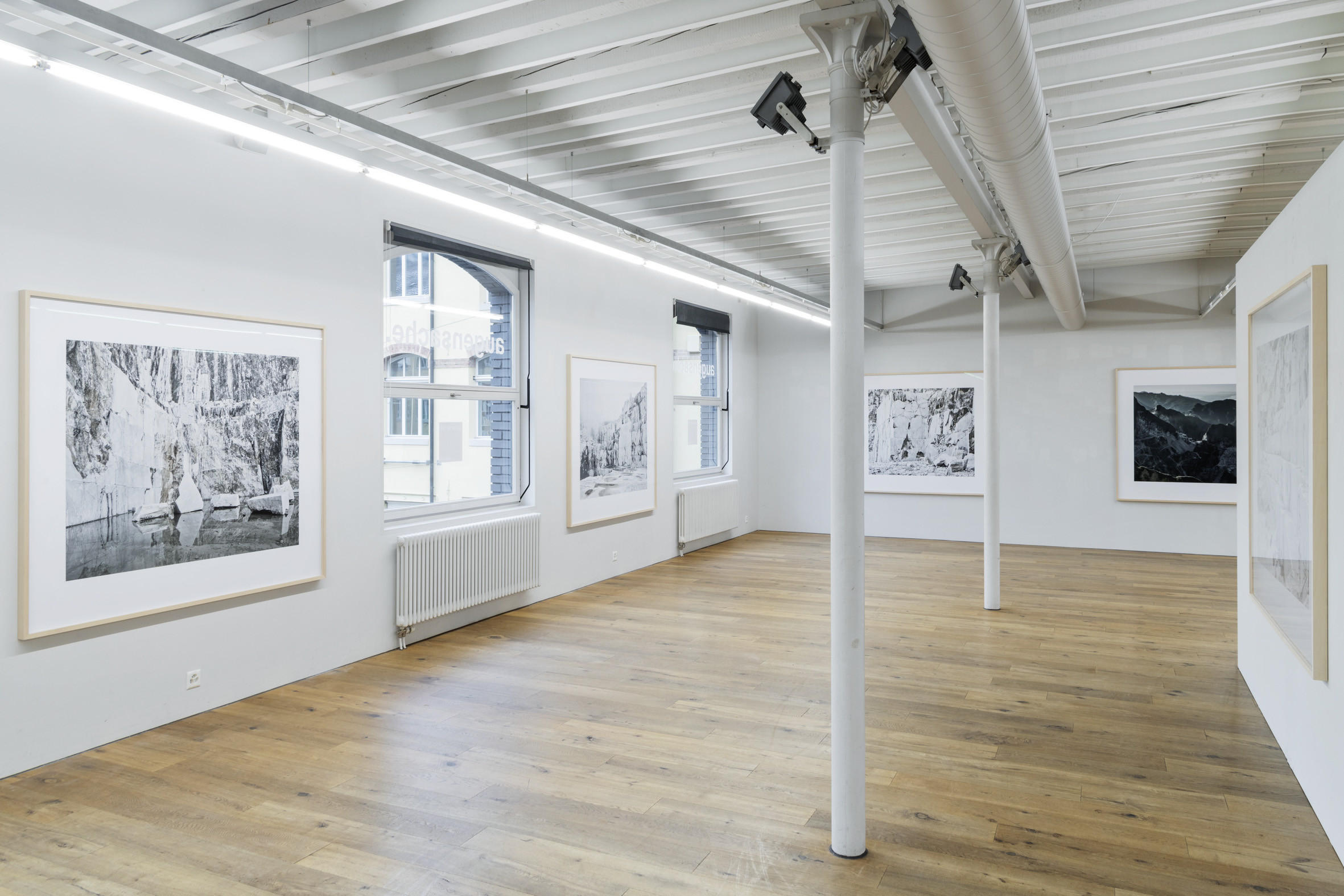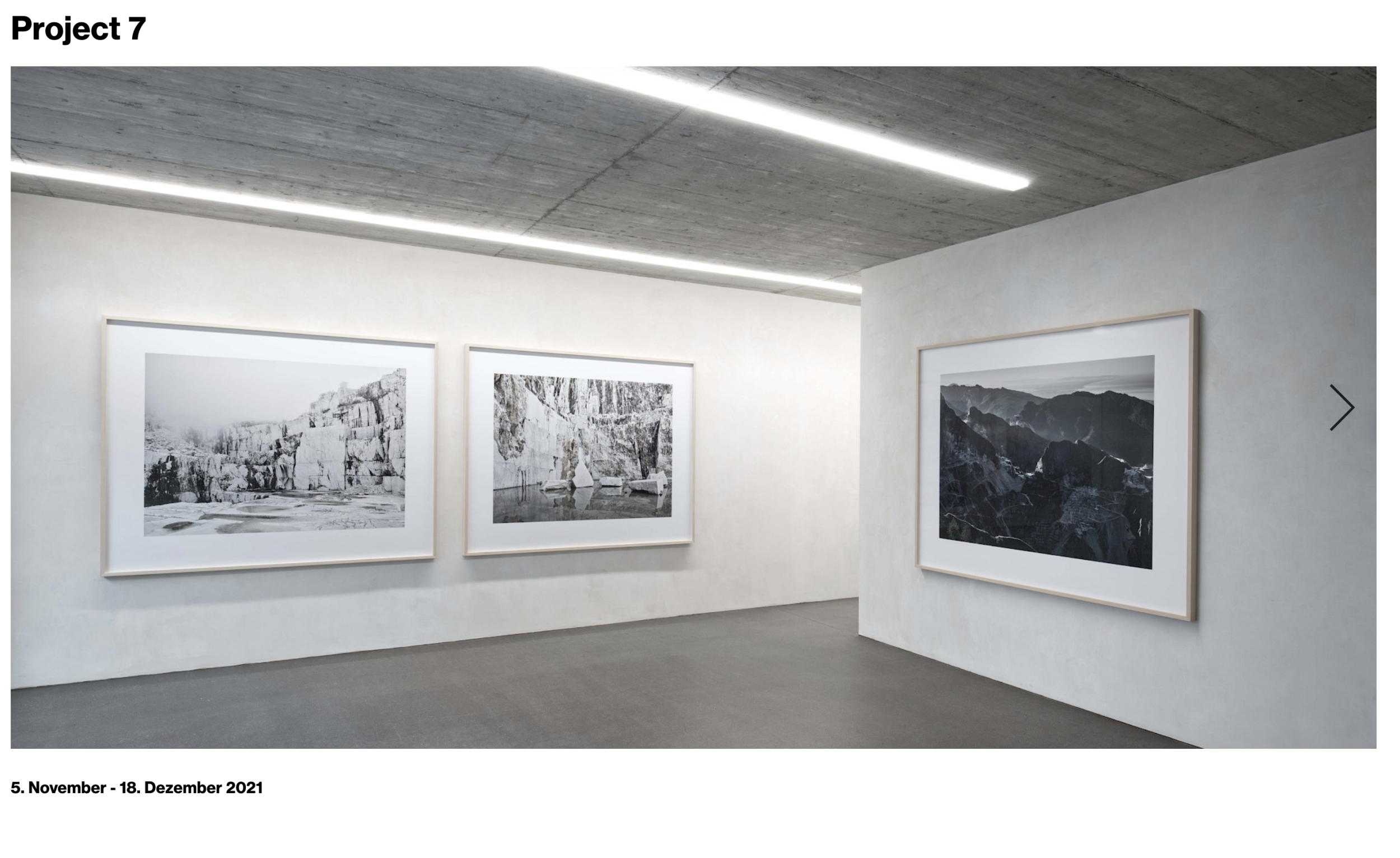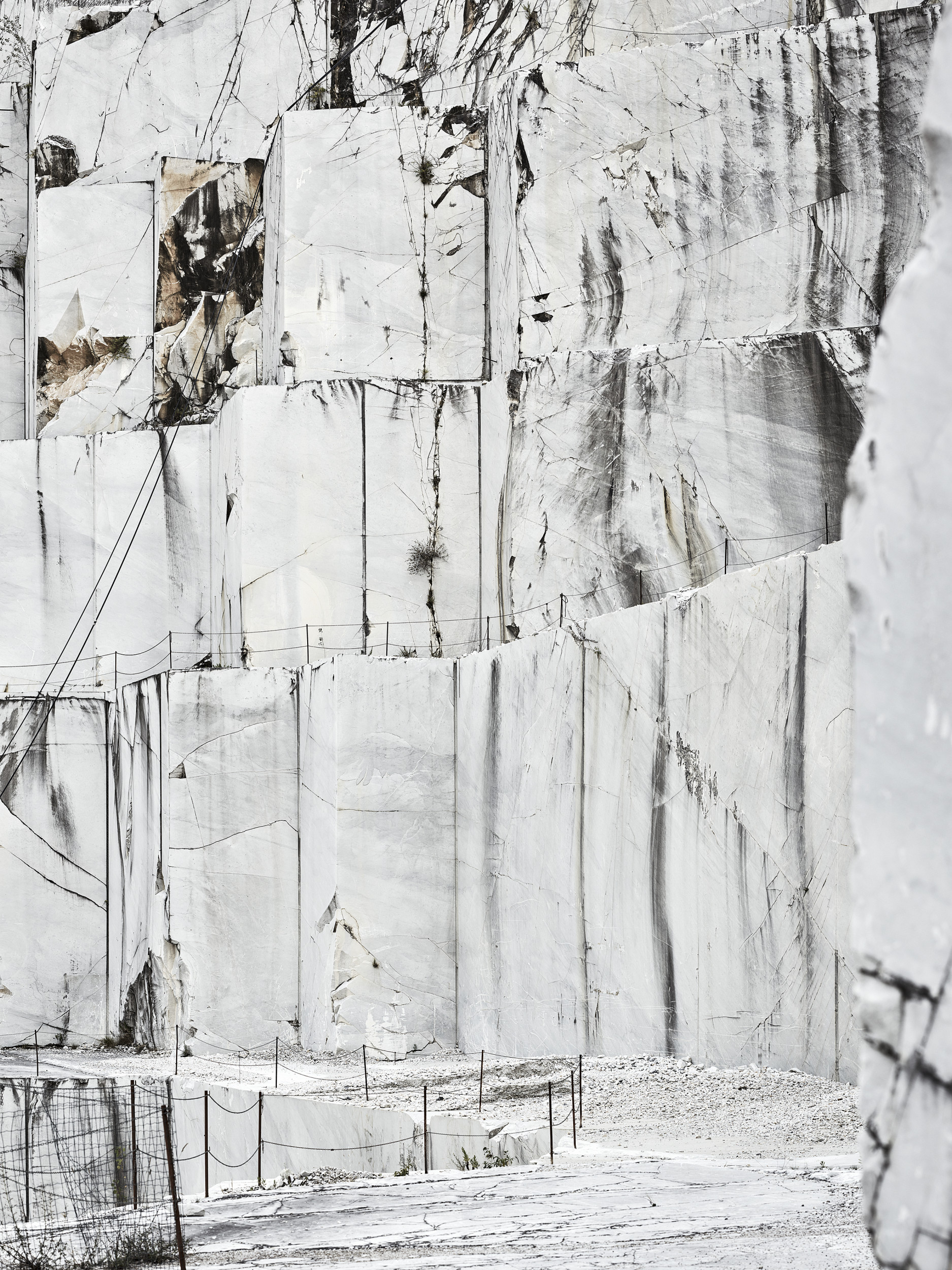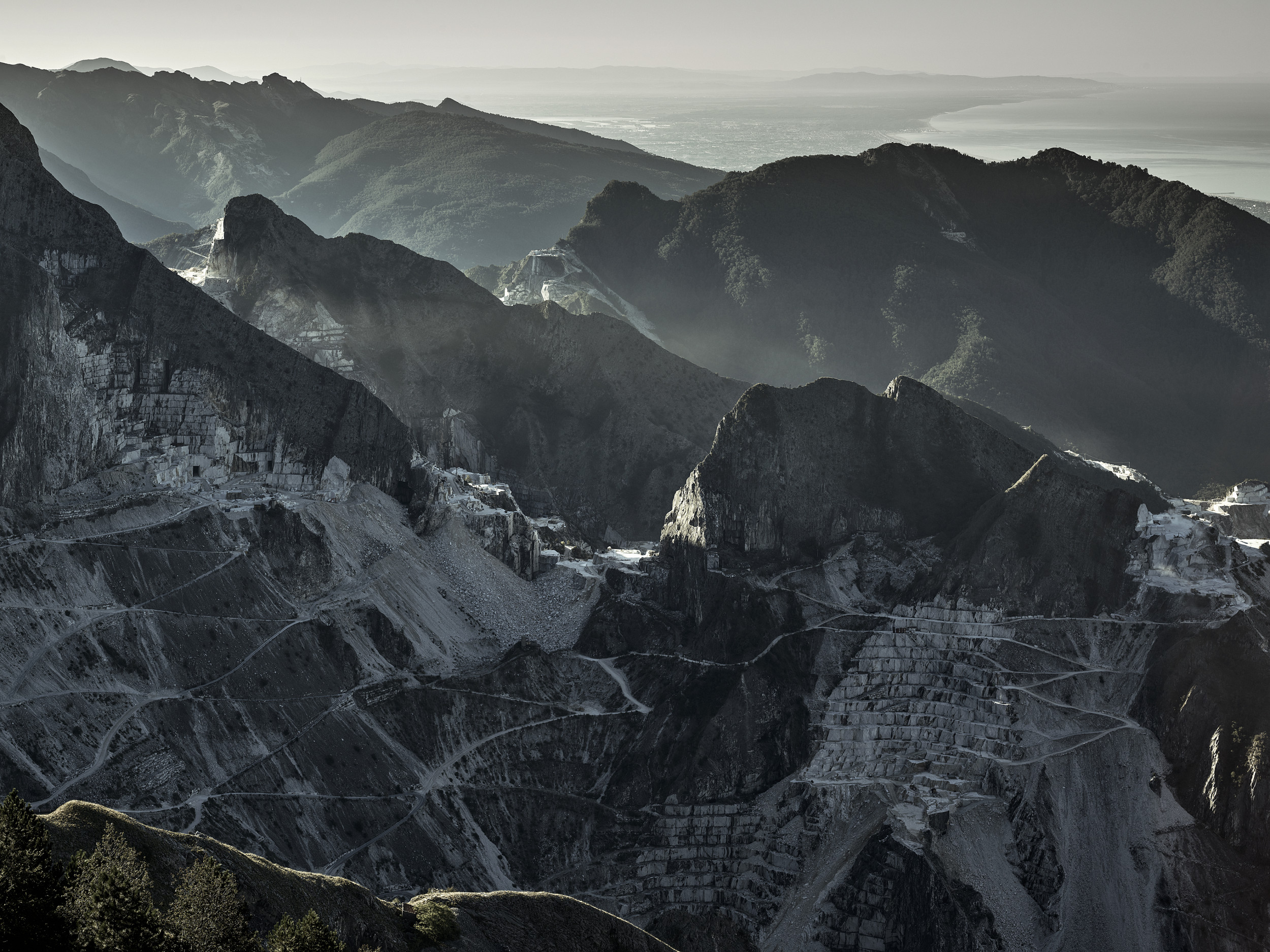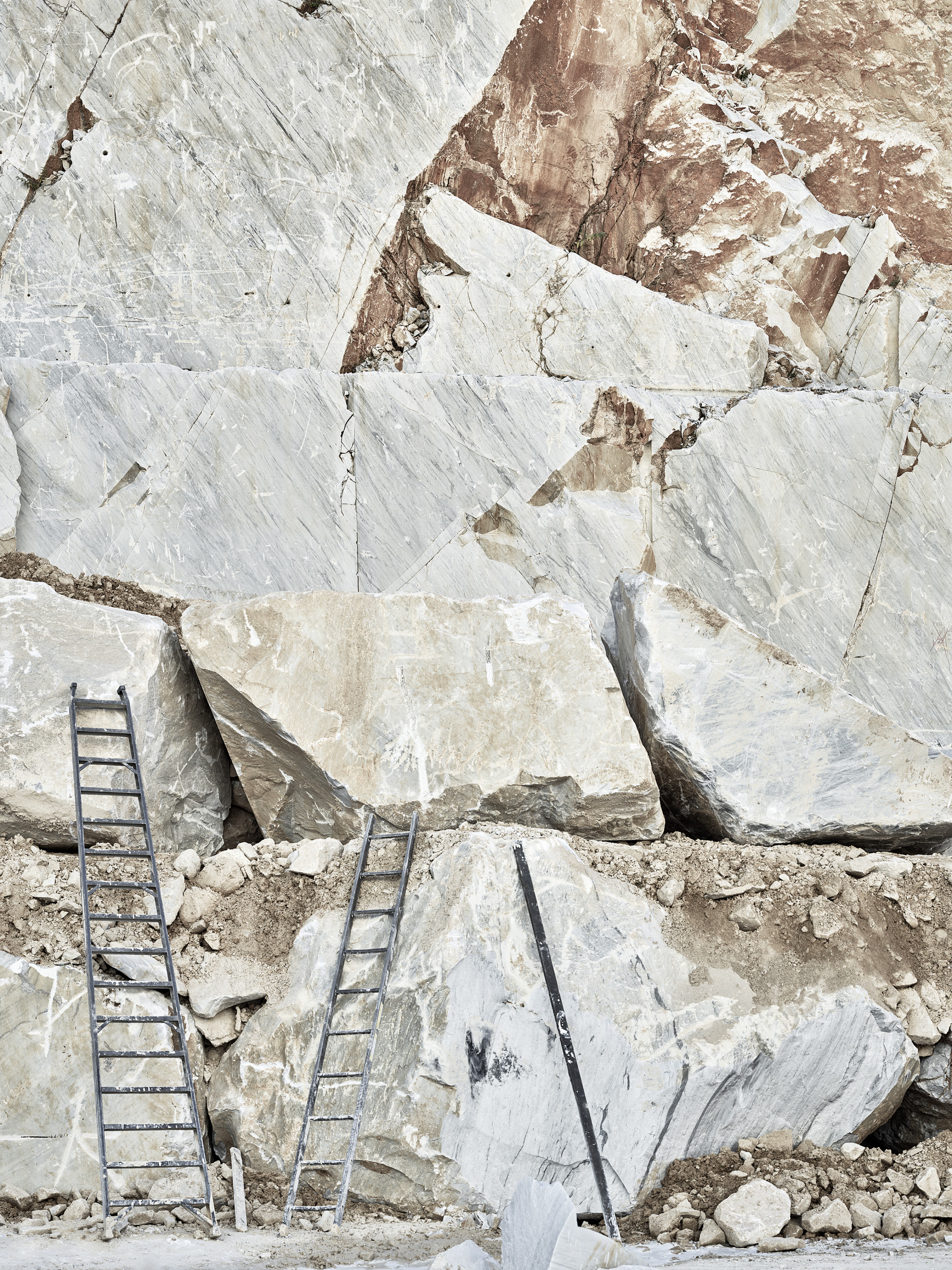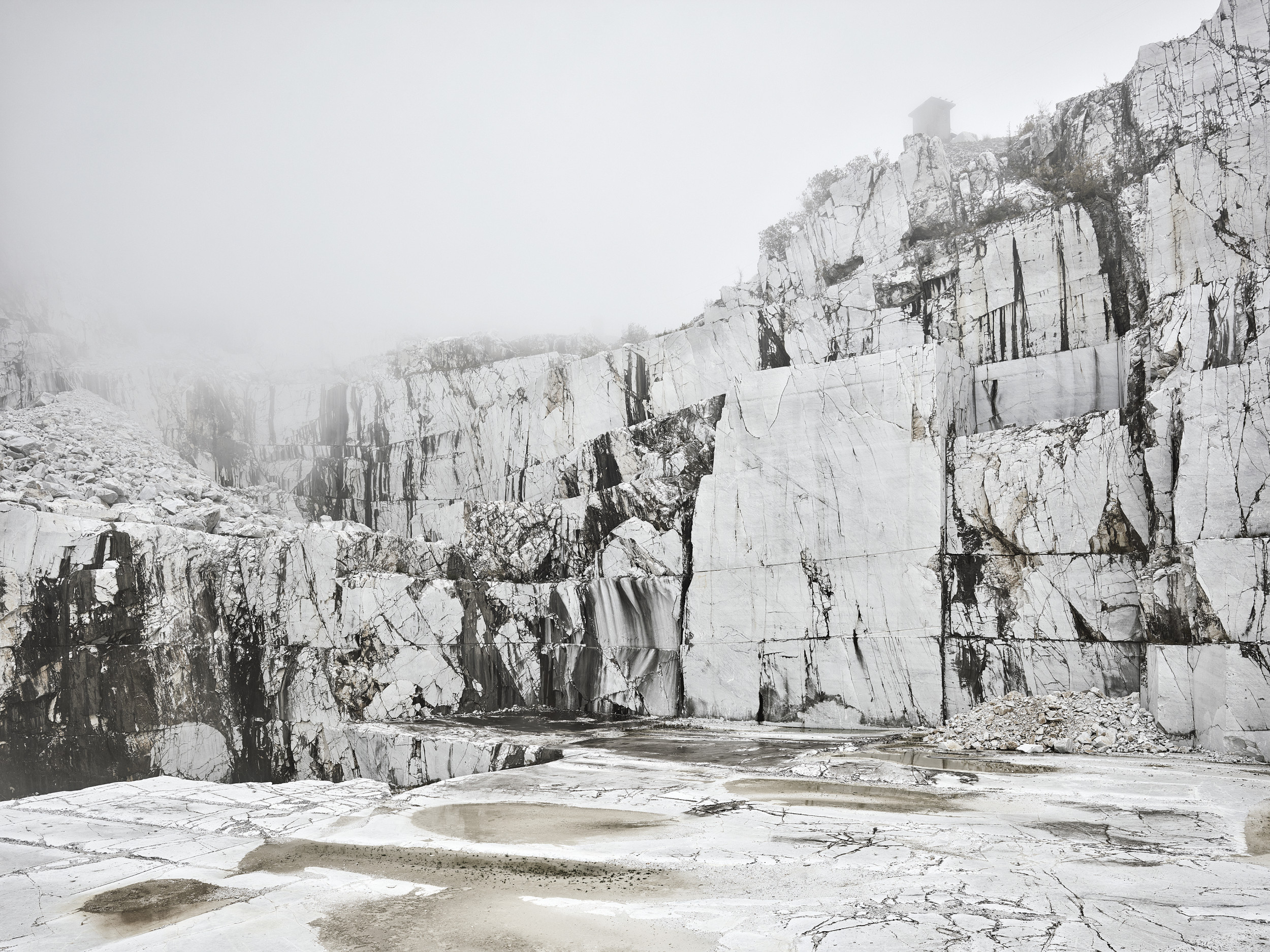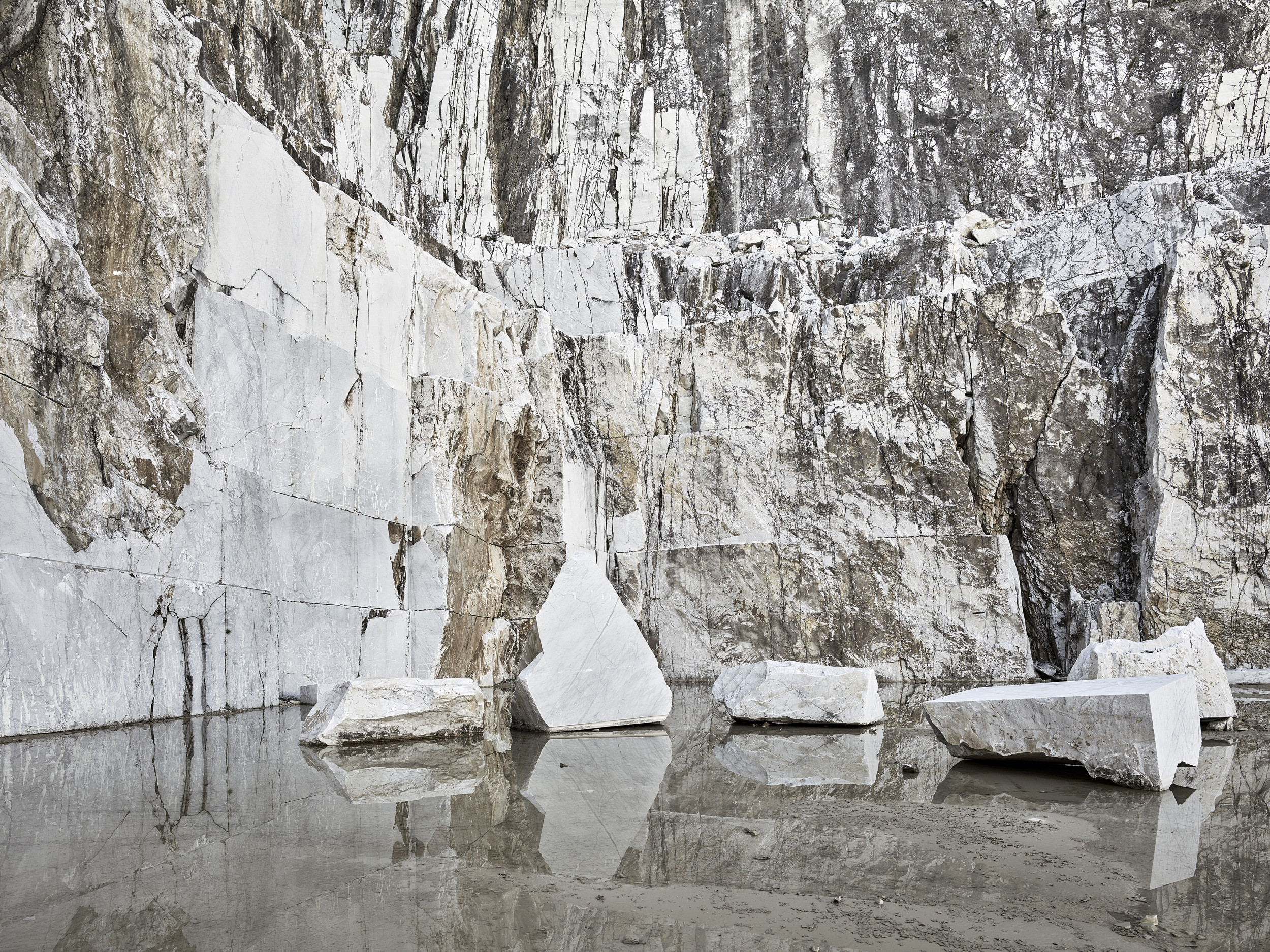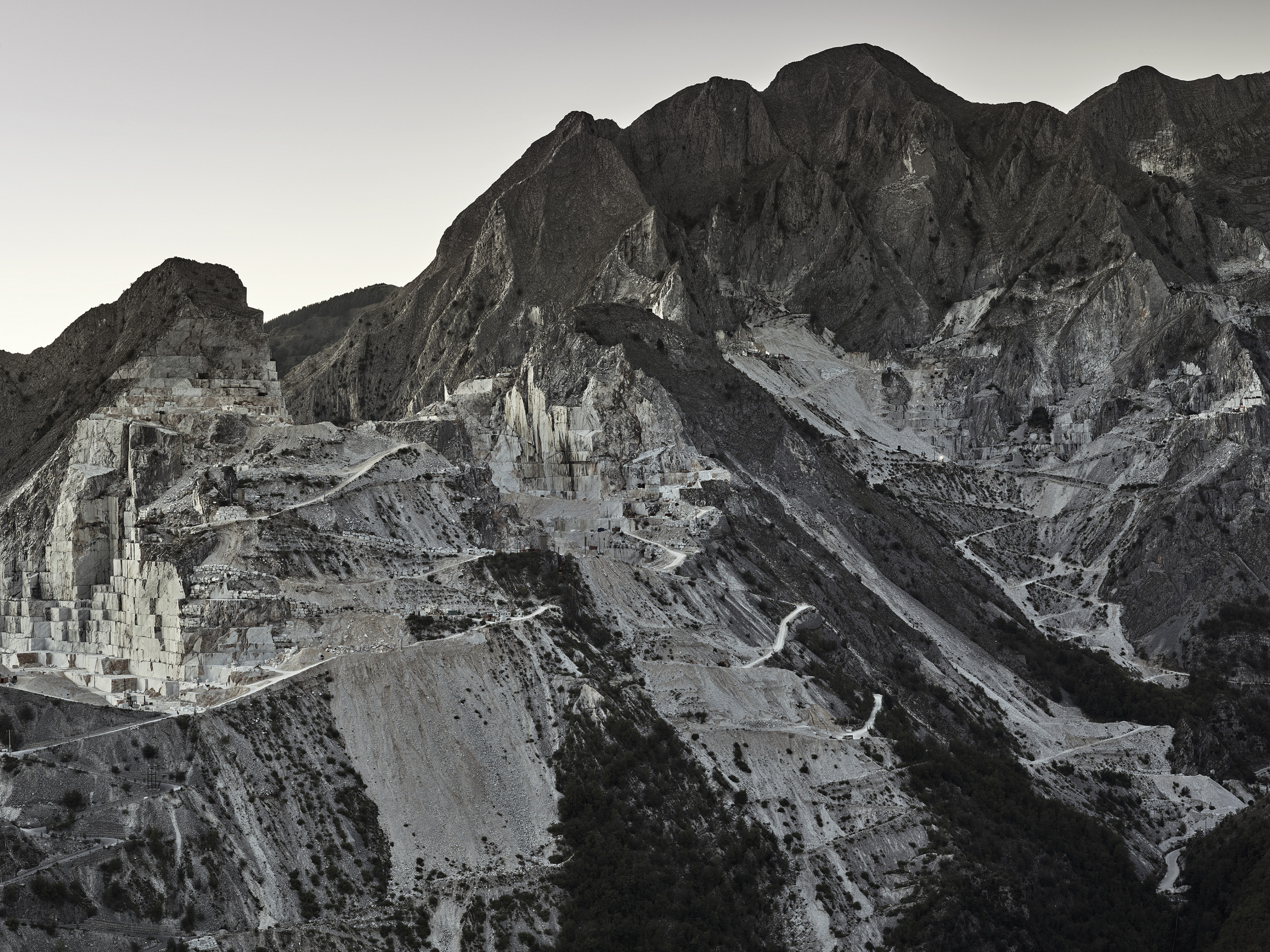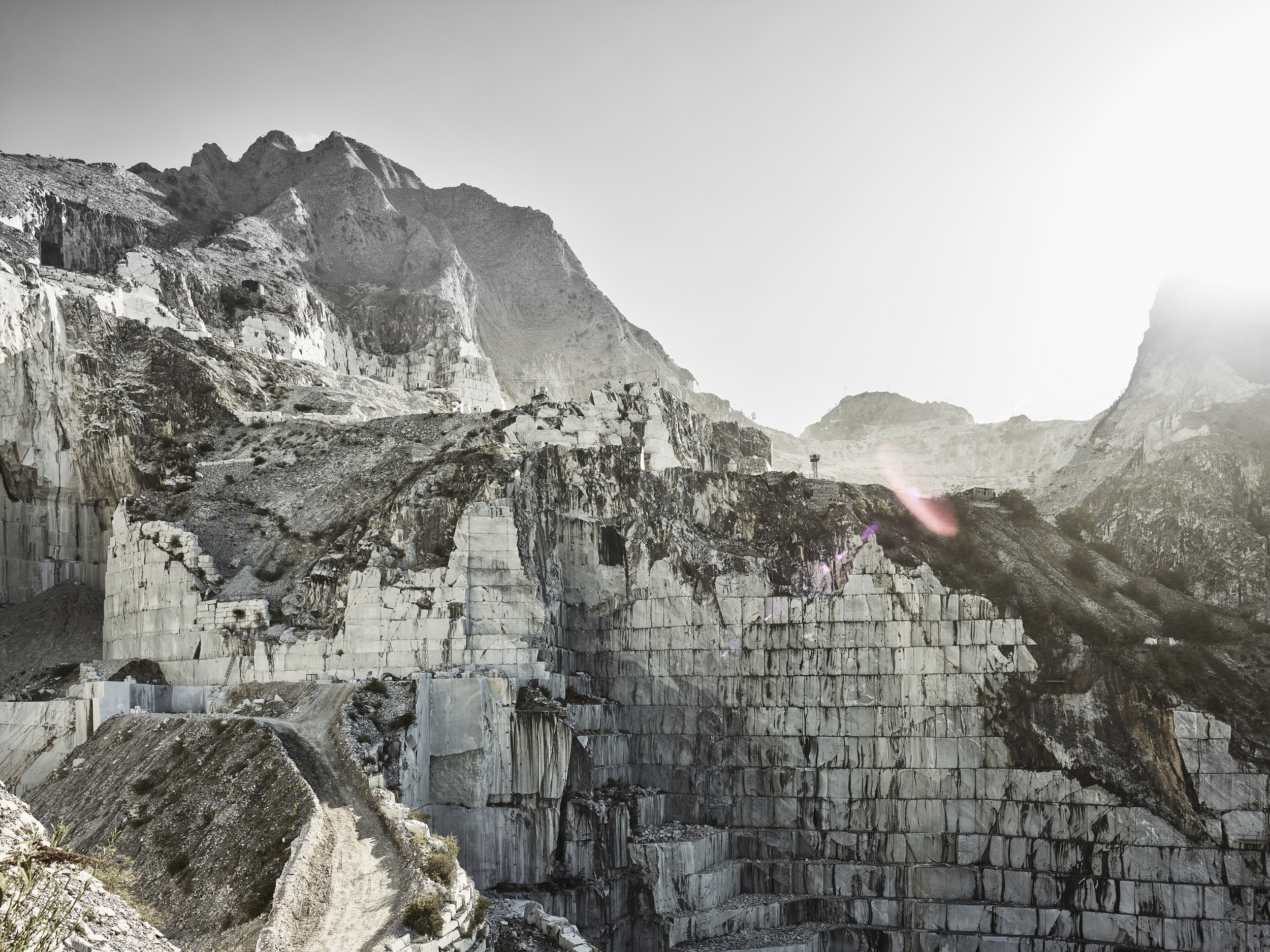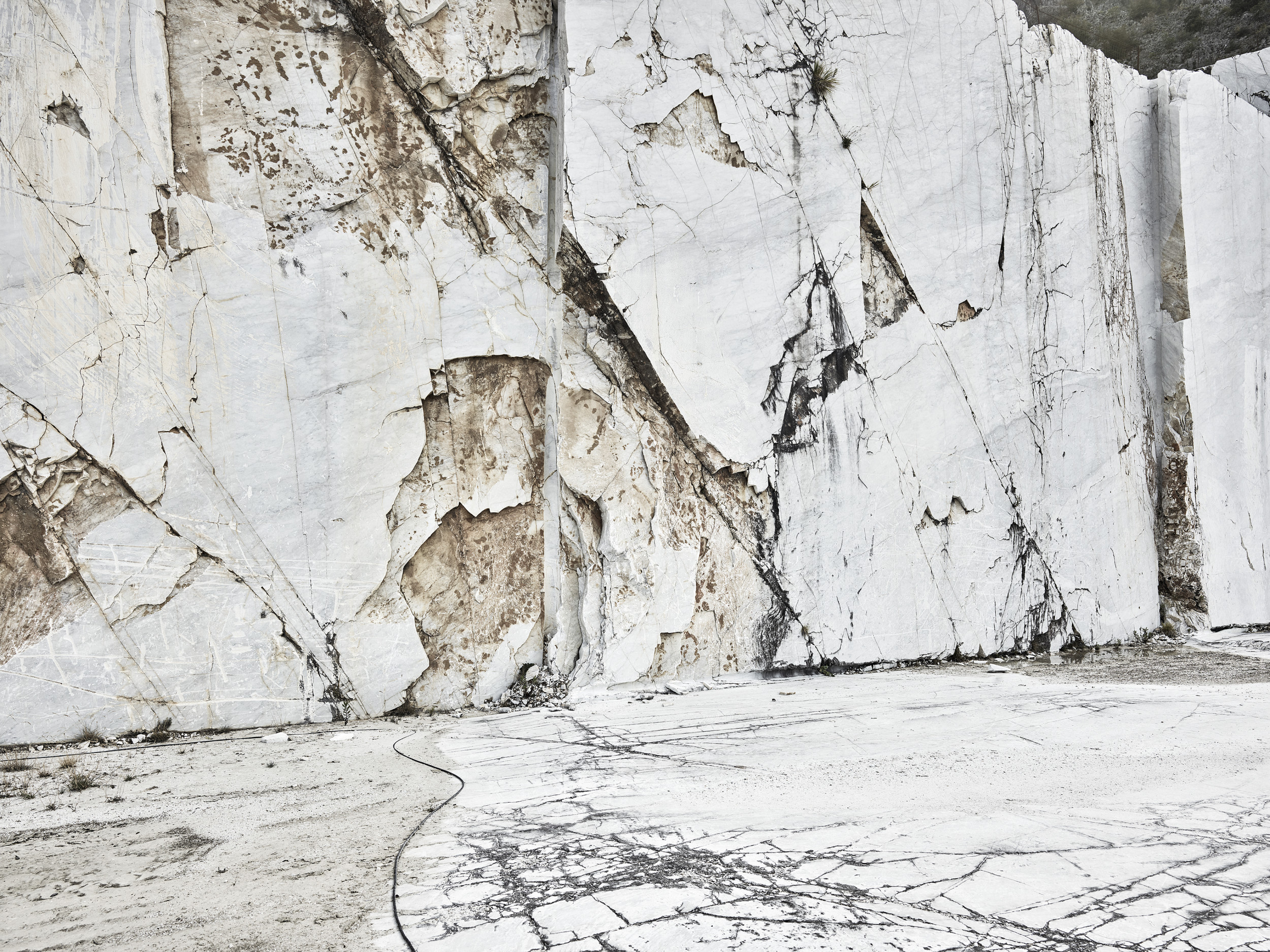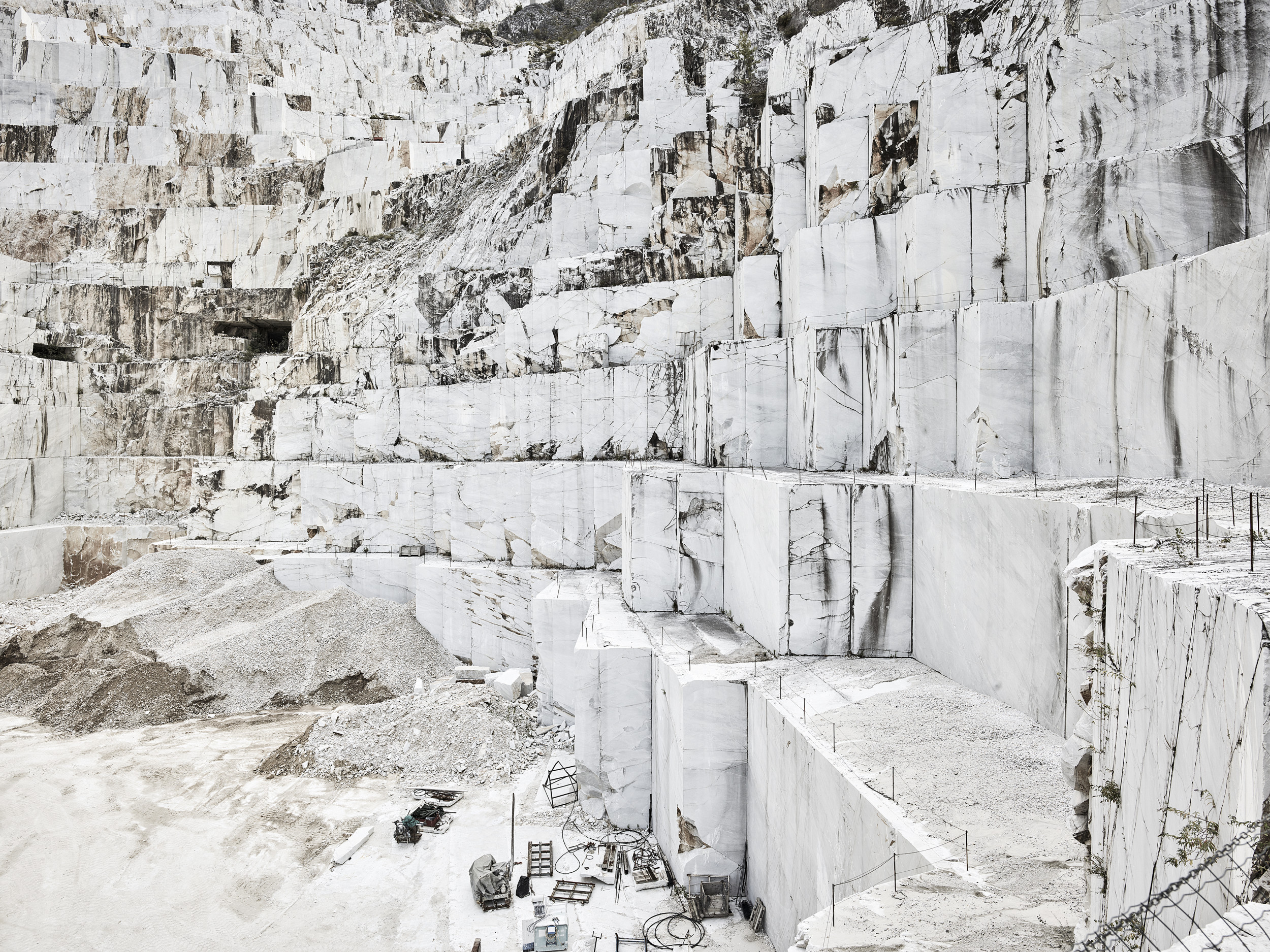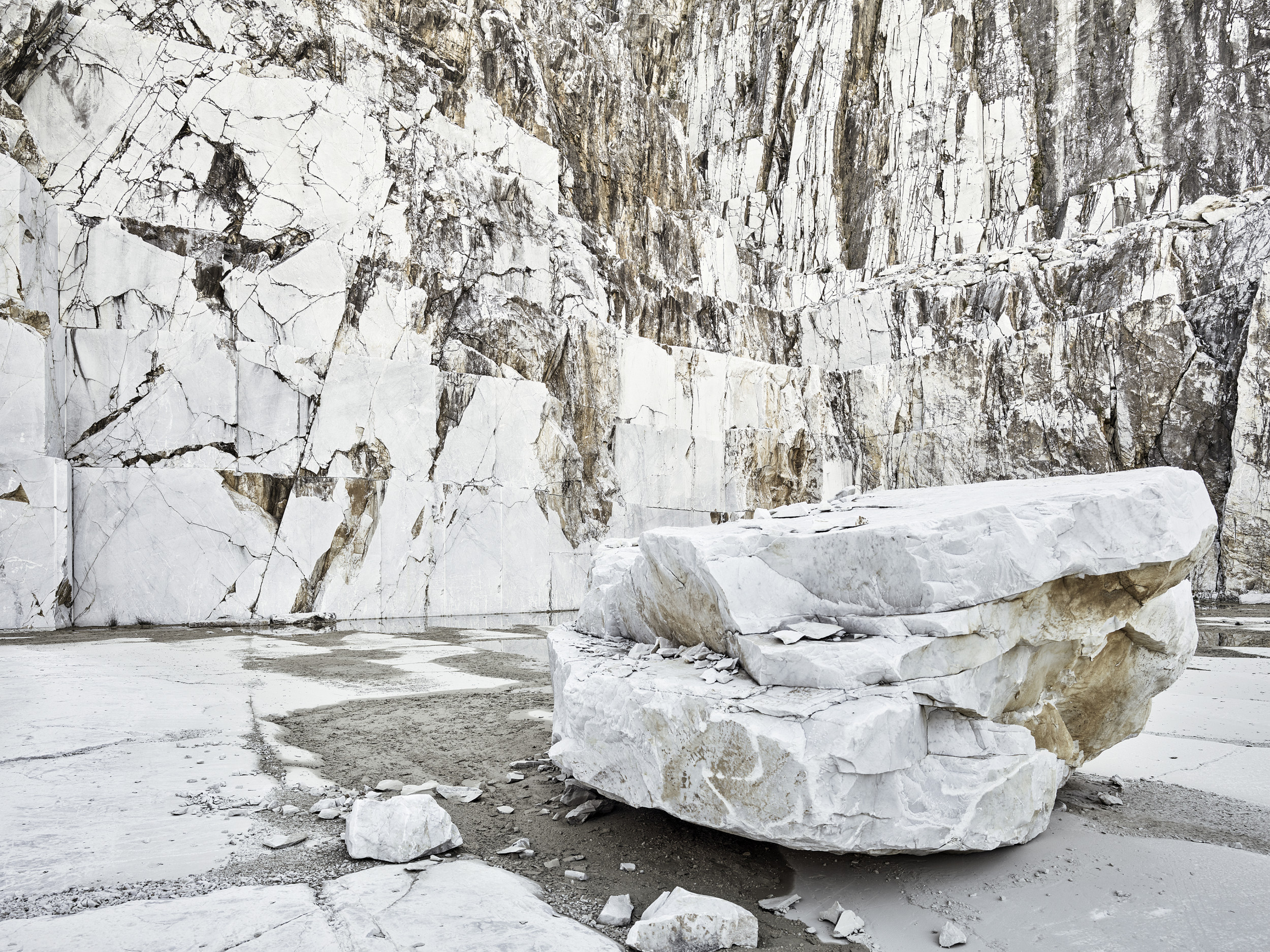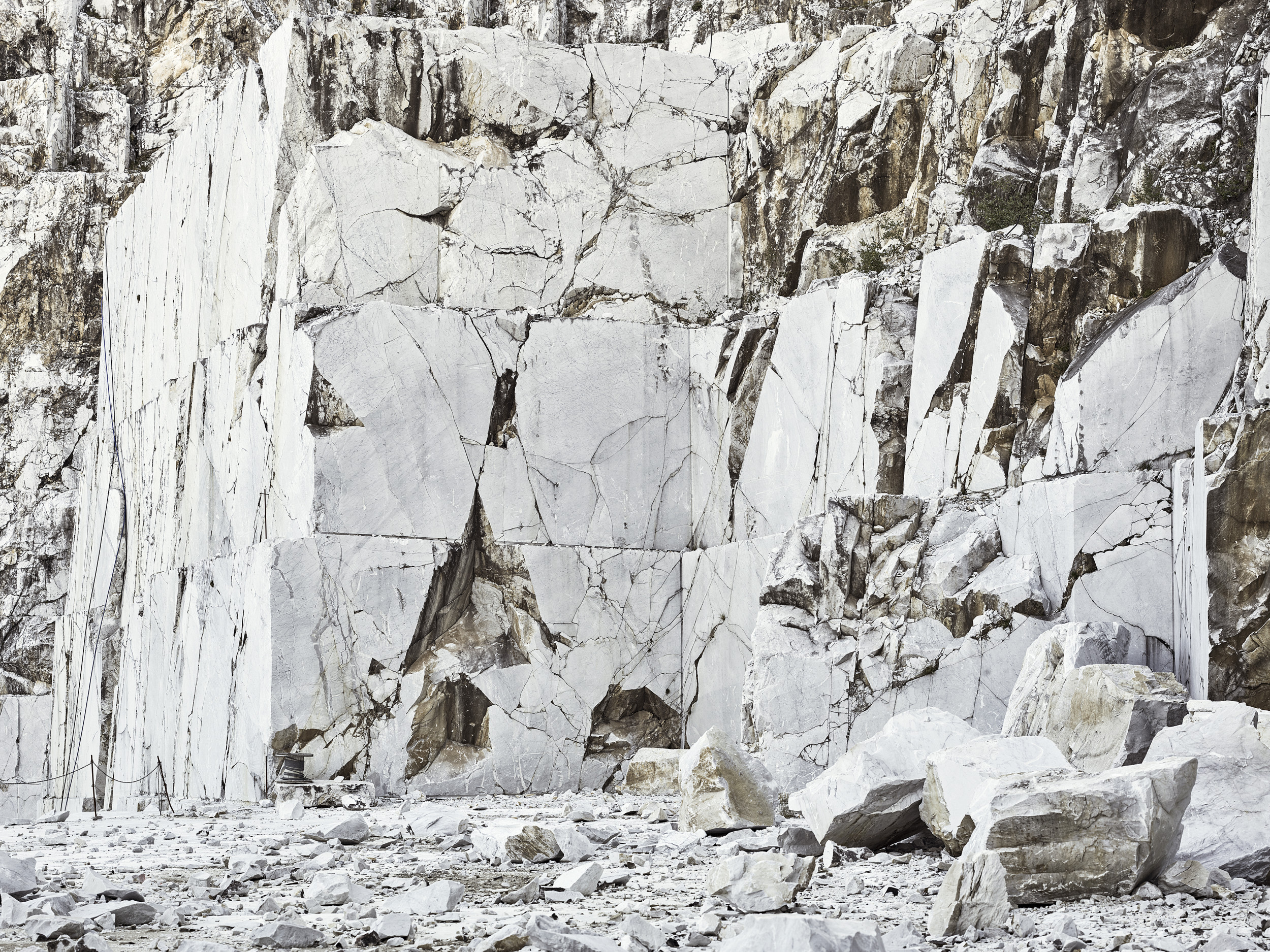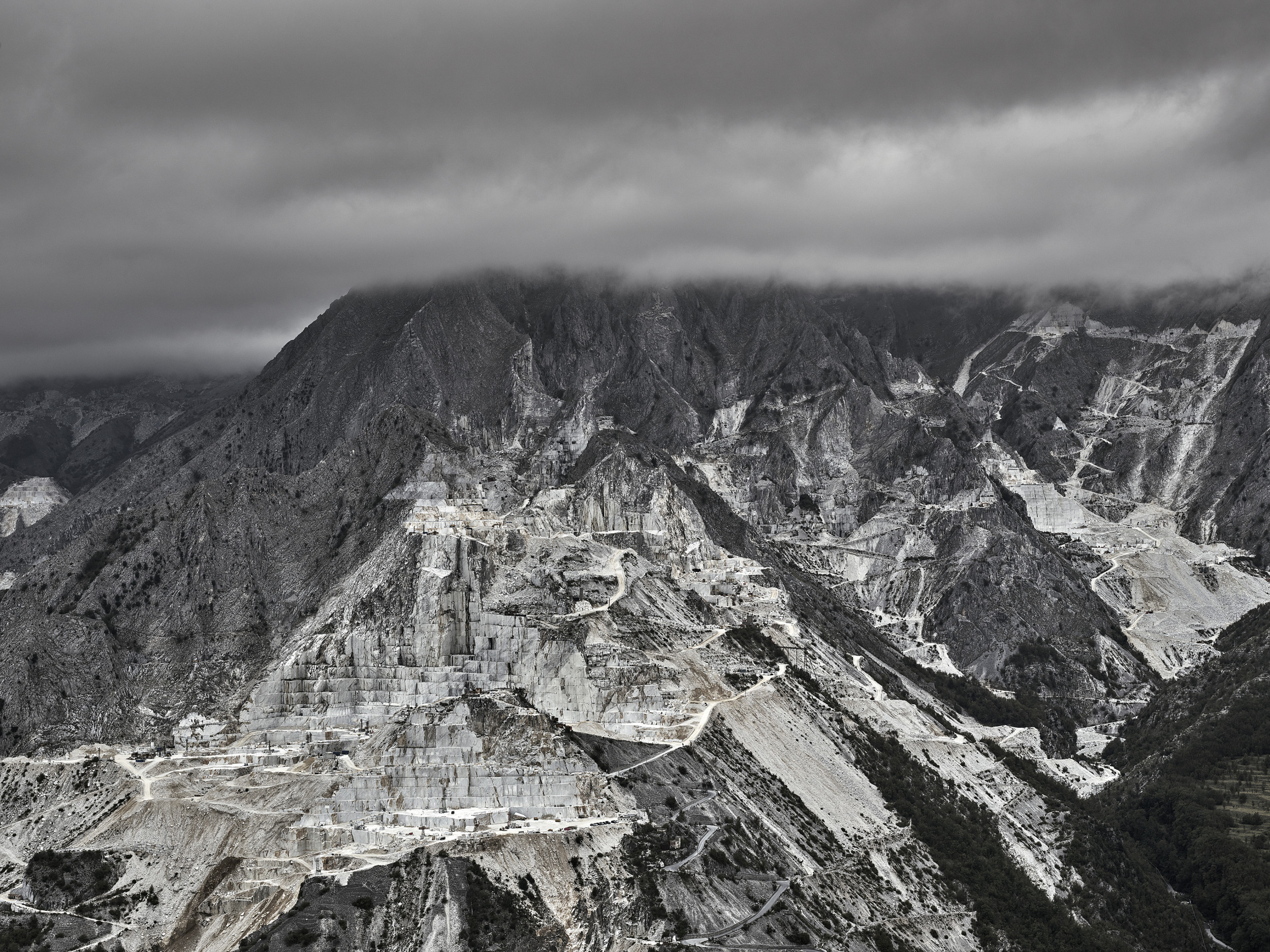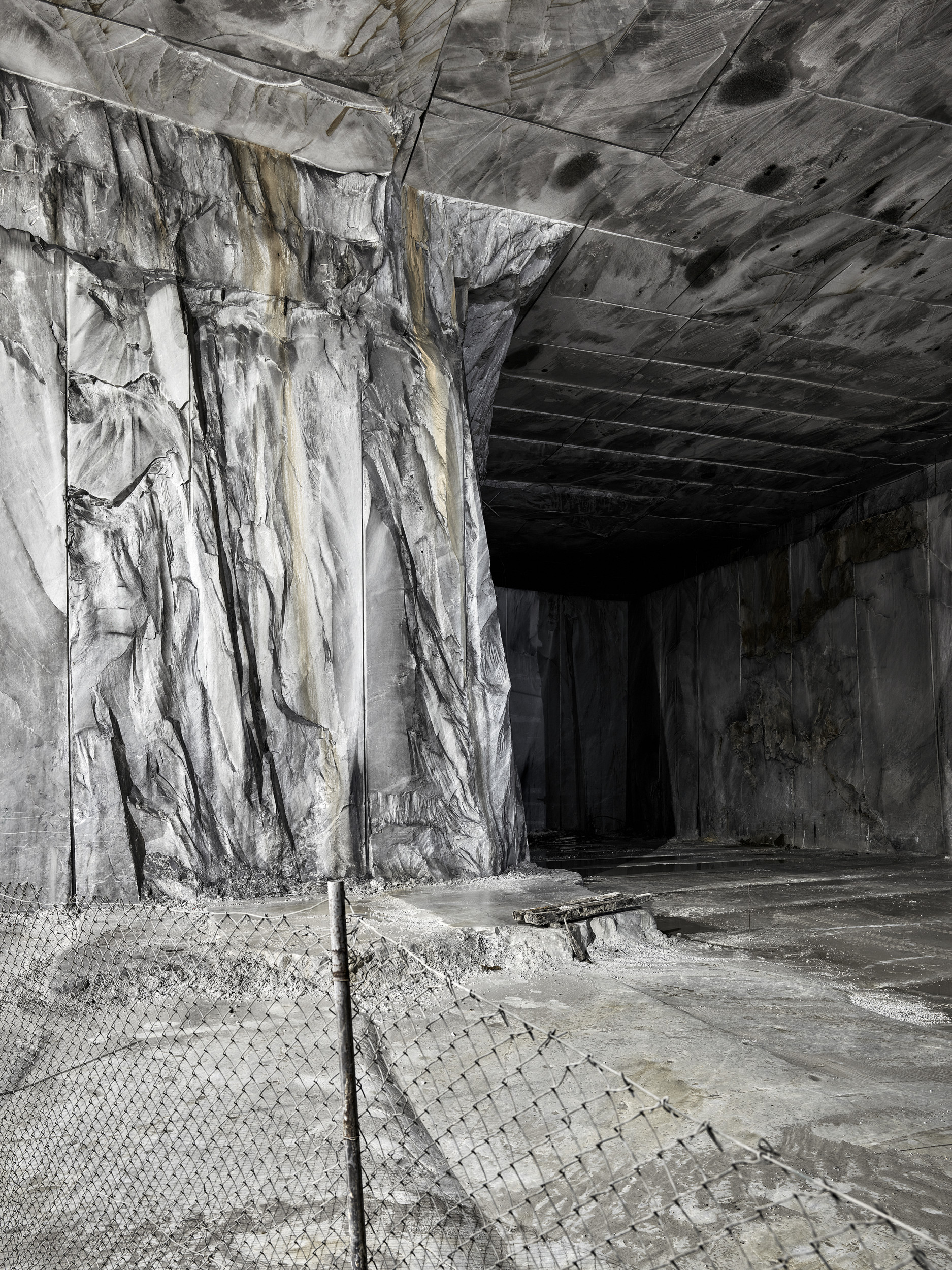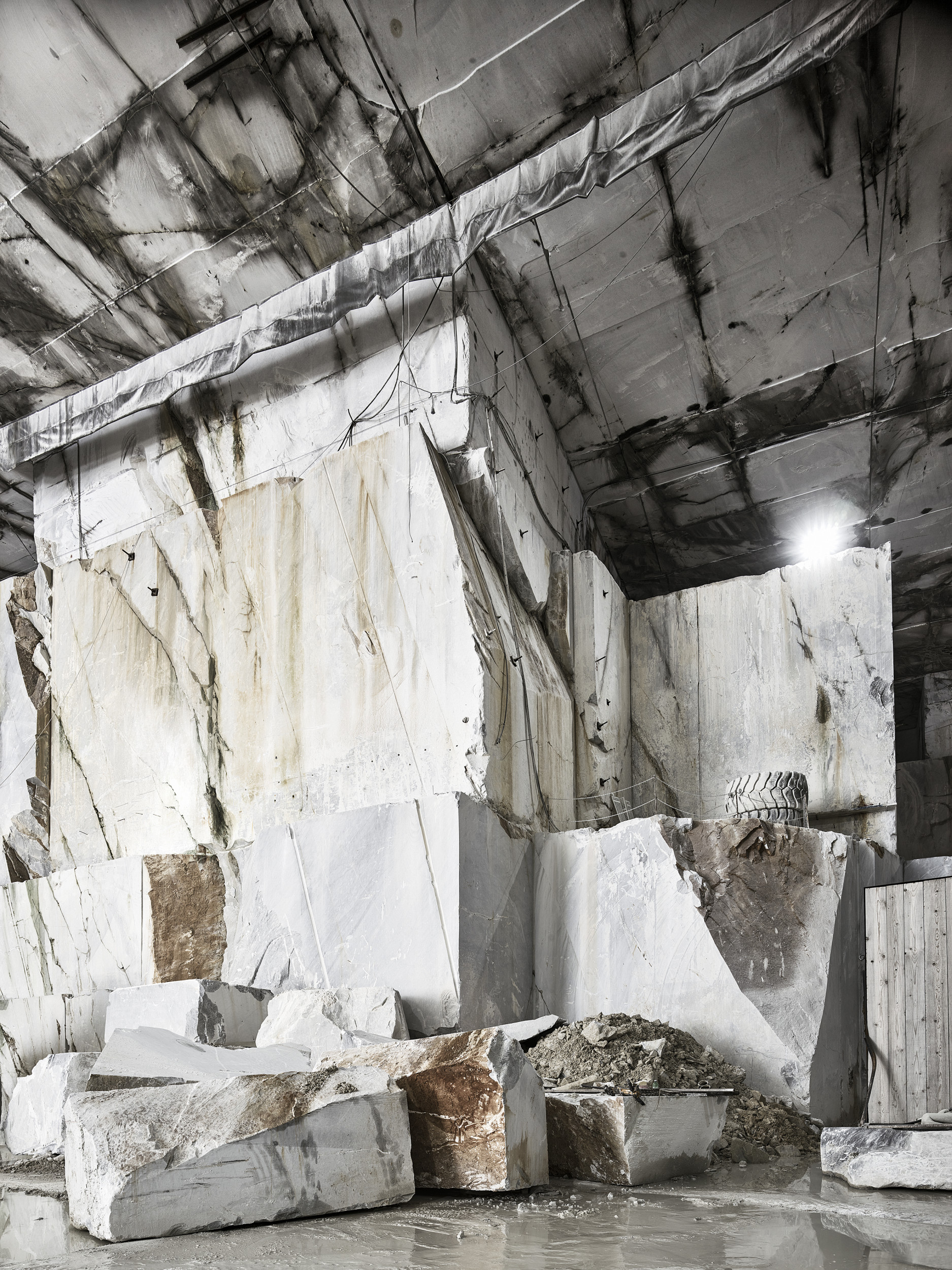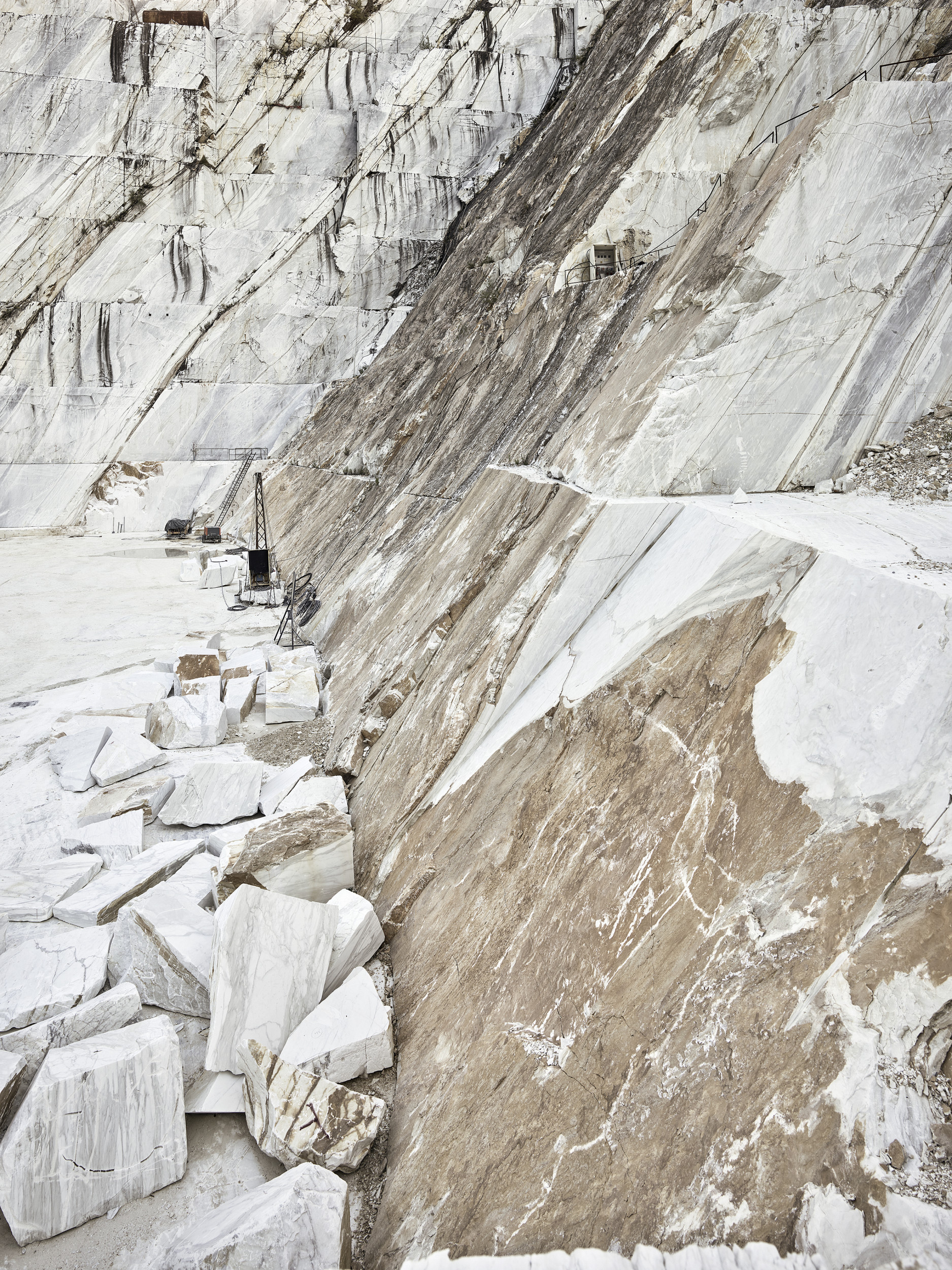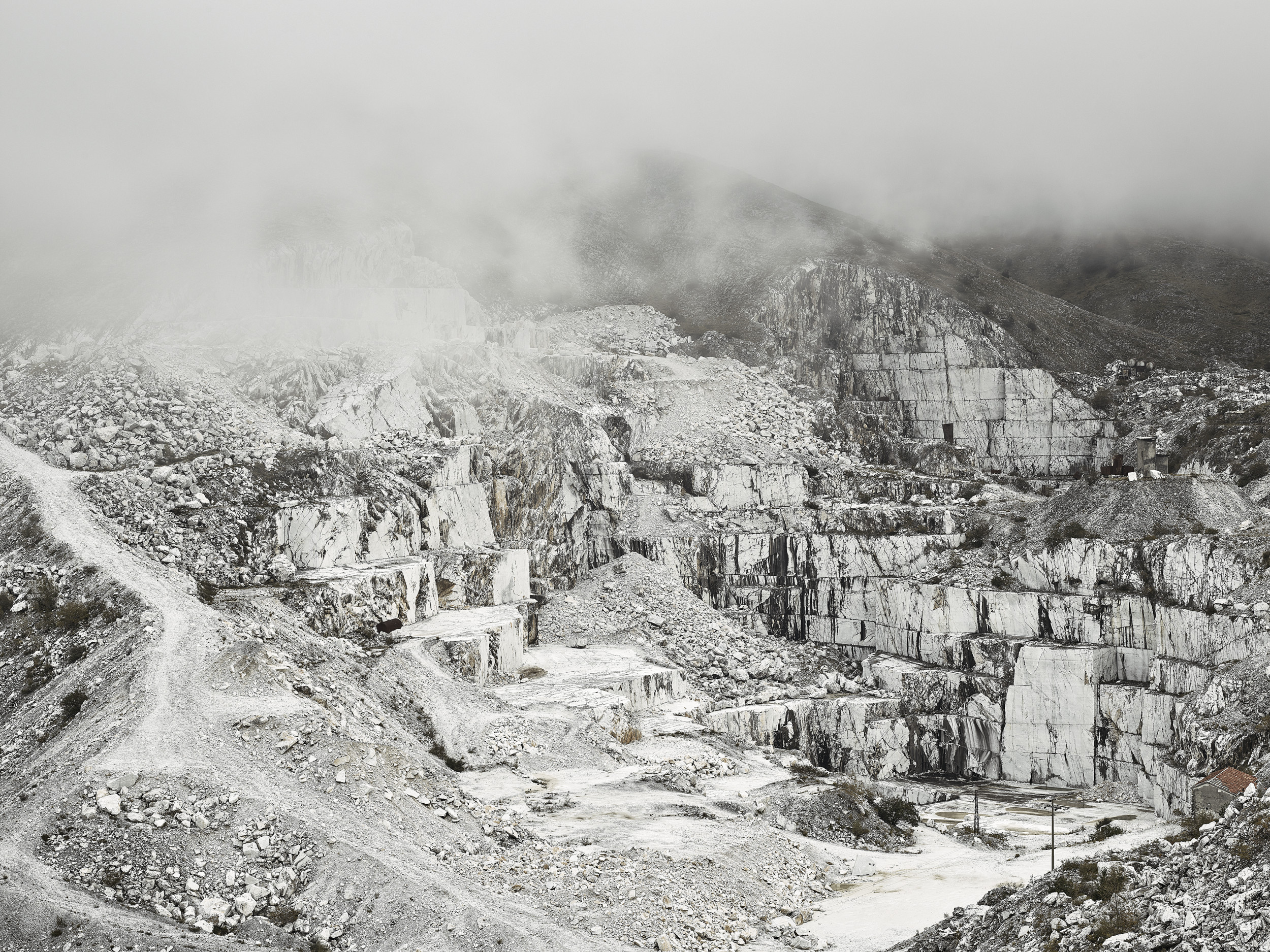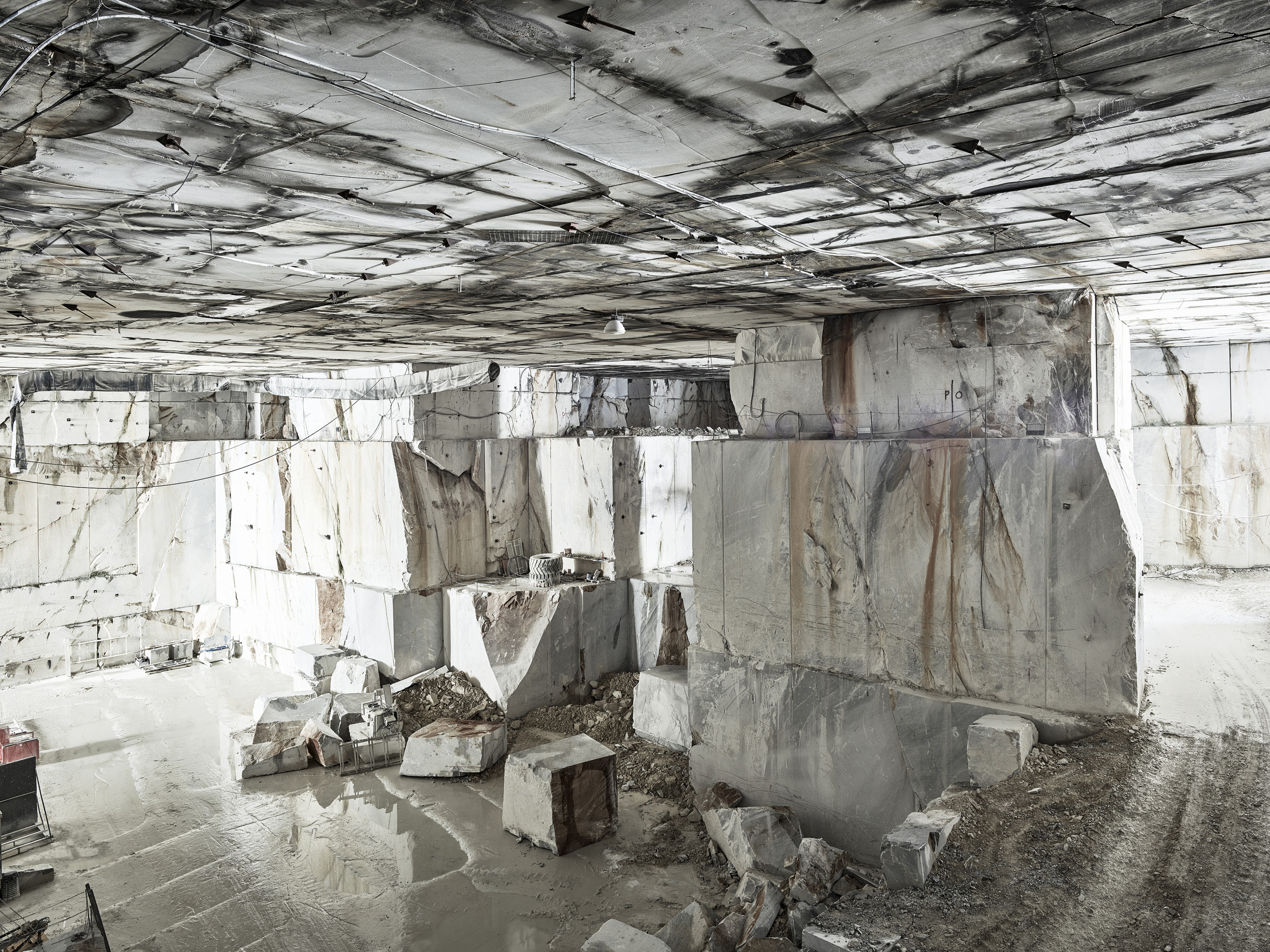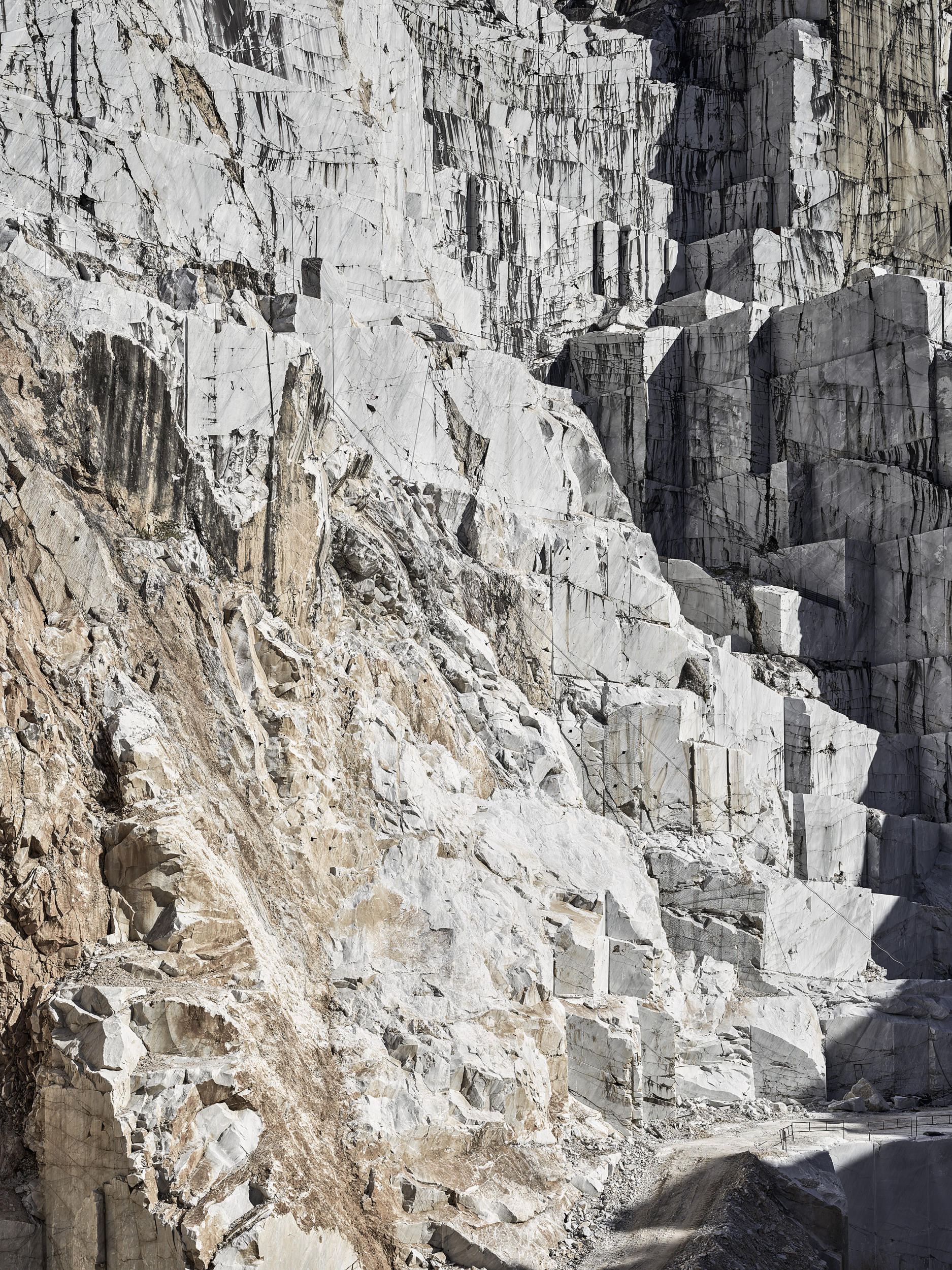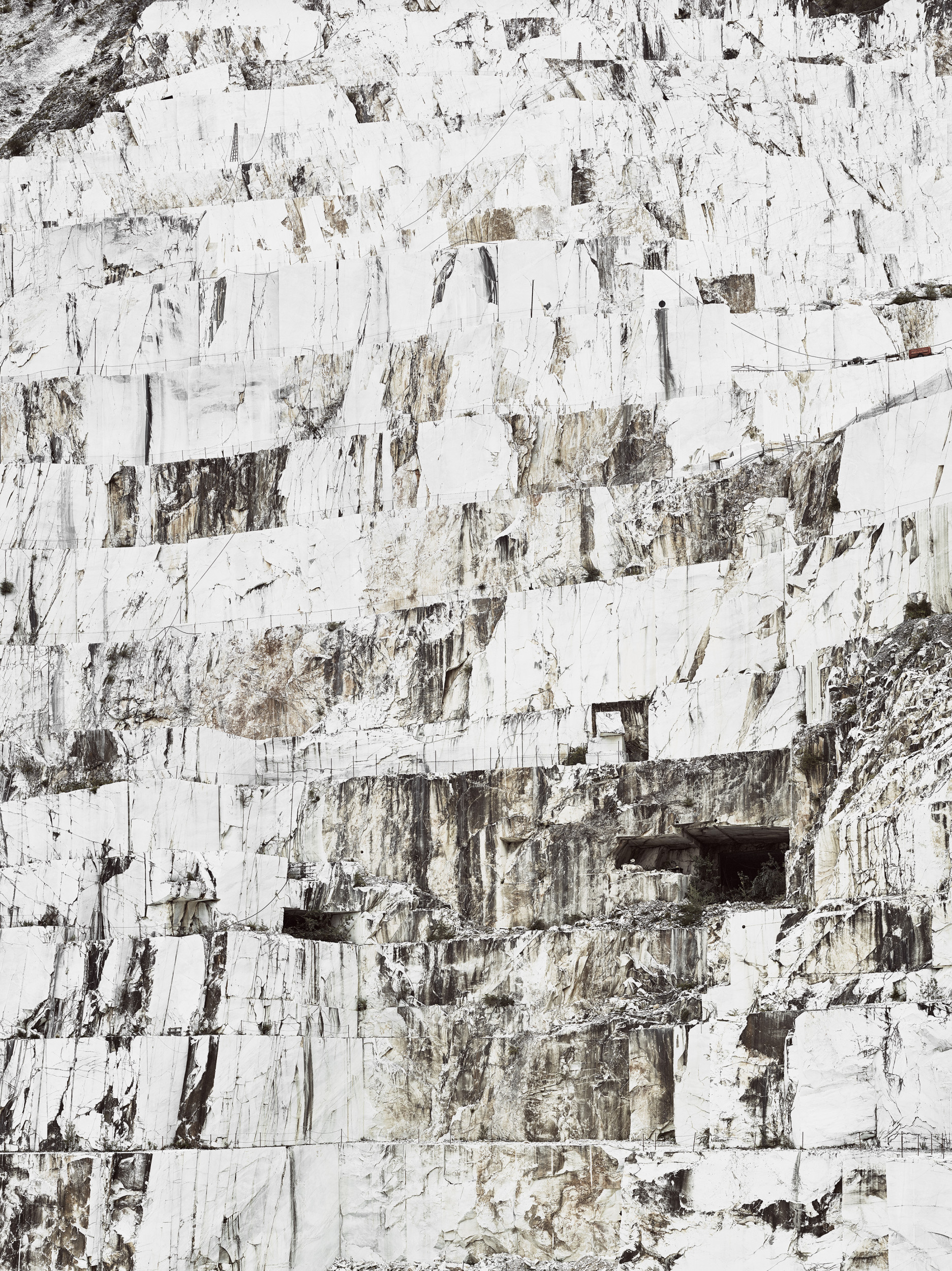Cicatrice
A magical mountain. A giant of stone, whose long, mighty limbs stretch out through a barren landscape, like a crucifix. Hemmed in between the Apennines and the Mediterranean, in Northern Tuscany, right before crossing into Liguria. On its peaks, at 2,000 meters, the mountain is topped with sublime, grey hair. The Apuan Alps harbor one of the world’s largest marble deposits: this is where, since the ancient Roman times, marble has been extracted – once using the most simple means and today with modern technology. Already Renaissance artists such as Michelangelo carved timeless sculptures in this white stone.
A bird's eye view on Carrara marble quarries reveals deep cracks, squares, roads all made from marble: a sharp white color in stark contrast with its background. A powerful spectacle that demands the observer's natural respect. The opening in the mountain - Man's intrusion into the rock - offers us a view of this imposing, geometrical stone setting, unveiling a visual force of attraction that will mesmerize any observer. Marble: not a gemstone but, undoubtedly, the most precious of rocks. Only the finest, purest, snow white stone is attributed the quality seal: Carrara marble. Locals call it white gold; unsurprisingly, as it has provided them with a source of income and work for as long as they can remember. The treasure of the Apuan Alps is exported to all corners of the globe.
At the same time, today the white mountains around the industrial city of Carrara are marked by deep wounds: the depletion has left behind timeless scars. Fissured valleys, dissected ridges, a life-hostile, unique moon landscape in the midst of Tuscany's mellowness. The photographs of these majestic quarries portray an isolated world; aesthetic, bizarre, raw. It is a white universe enveloped in its own self, artificial and natural at once. The Province of Massa and Carrara displays the excesses of industrial development and the global craving for luxury in a plastic way. Environmentalists are concerned about the consequences of this exploitation: marble dust penetrates deep into the ground water, impregnates the air, and is responsible for rivers turning the color of milk. Only over the last decade, Carrara has been affected by four major floods, which environmentalists connect to the extensive marble extraction and consequent disruption of the hydrogeological equilibrium.
The extraction of marble in the Carrara quarries is a metaphor for the excessive global intrusion of Man into nature: automation, resource shortage, concentration of wealth, as well as the conflict between environment and production. These scars will remain long after people will have left this manmade Tuscan landscape: the Carrara quarries are running out of marble. Geologists believe that the marble will only last another fifty years.
